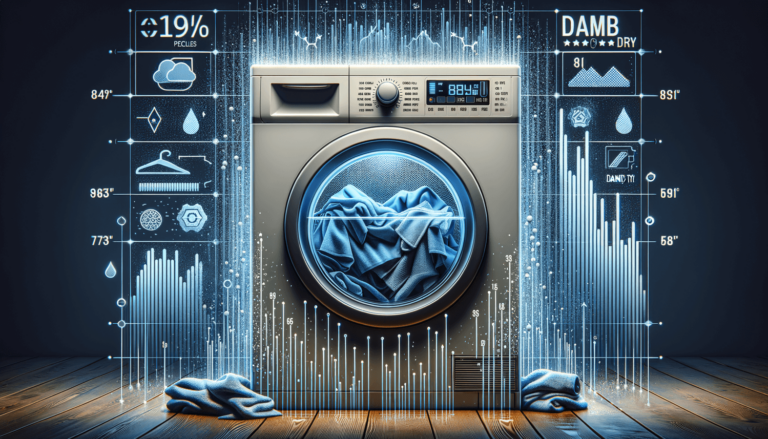

Damp Dry is a dryer setting that leaves clothes slightly damp, typically for easier ironing or air-drying. It uses less heat and a shorter drying time than standard settings.
Some dryers have specific Damp Dry settings, while others allow manual temperature and time adjustments to achieve the same result. Using this setting can save energy, protect delicate fabrics, and help you avoid over-drying.
For optimal results with Damp Dry, Settings King suggests selecting a low heat and a drying time of about 20-30 minutes. Adjust temperature and time as needed for your specific dryer and laundry load.
Implementing Damp Dry in your dryer settings routine helps to:
Damp Dry is a dryer setting that leaves clothes slightly damp, typically for easier ironing or air-drying. It uses less heat and a shorter drying time than the standard settings.
Some dryers have specific Damp Dry settings, while others allow manual temperature and time adjustments to achieve the same result. Using this setting can save energy, protect delicate fabrics, and help you avoid over-drying.
For optimal results with Damp Dry, Settings King suggests selecting a low heat and a drying time of about 20-30 minutes. Adjust temperature and time as needed for your specific dryer and laundry load.
Implementing Damp Dry into your dryer settings routine helps to:
Alongside Damp Dry, consider these drying techniques to improve your laundry experience and results:
Find answers to frequently asked questions about Damp Dry settings and other related laundry tips to make your drying process more efficient and effective.
Yes, Damp Dry can be used for most fabrics, but it’s especially beneficial for delicate and synthetic materials that might be prone to damage from high heat. Acquaint yourself with your clothing labels for specific care instructions.
If your dryer lacks a designated Damp Dry setting, you can create a similar effect by manually adjusting the temperature to low heat and setting the timer to approximately 20-30 minutes. Adjust as needed based on your dryer and laundry load.
Yes, you can often combine Damp Dry with other settings such as Delicate, Air Fluff, or Steam Refresh, depending on your dryer’s features and the specific care requirements of your clothing items.
To ensure even drying, shake out each item before placing it in the dryer and avoid overloading. Additionally, sort laundry by similar fabric types and sizes to promote consistent drying results.
After using Damp Dry, hang clothes on a drying rack or a clothesline in a well-ventilated area. For faster drying, ensure adequate spacing for optimal air circulation, and smooth out wrinkles to minimize the need for ironing.